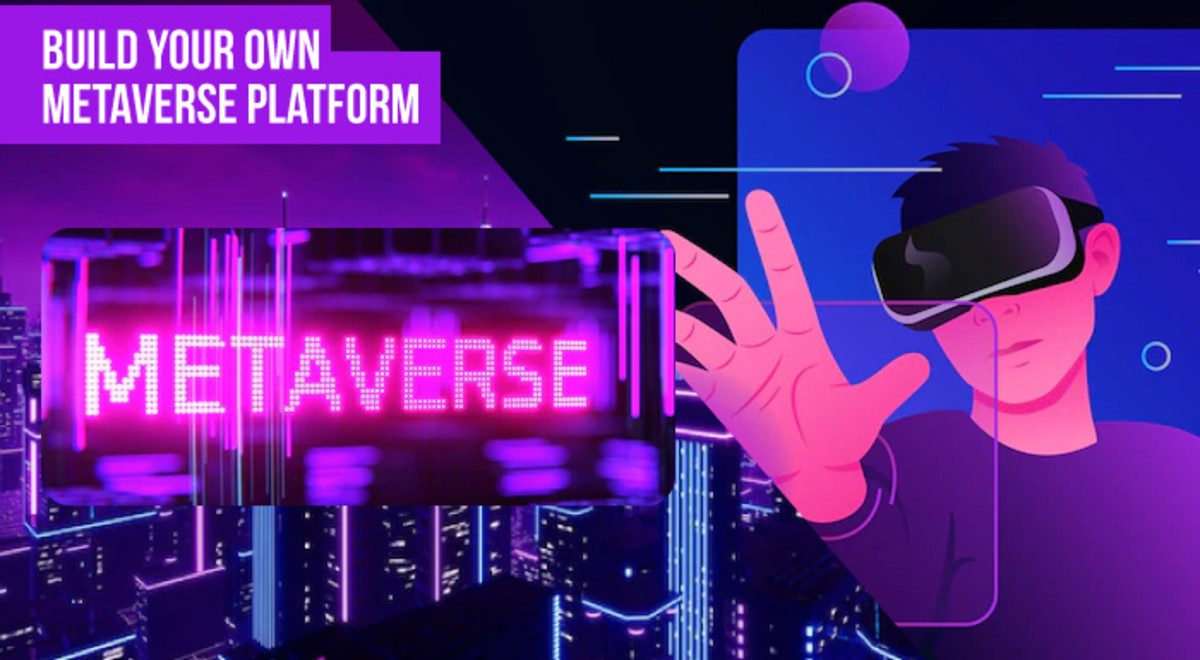What Is Metaverse?
Metaverse brings a life-like experience in a virtual world that exactly clones the real world where people can trade, play, socialize, and do various other activities in the immersive 3D digital space Metaverse is a simulated 3D representation of the physical world where people can display themselves as avatars which gives a new unique way to get a digital experience Metaverse development leverages various advanced technologies like Web 3.0, Virtual Reality, Augmented Reality, 3D technology, the Internet of Things (IoT), and Blockchain mechanics
How to Make a Metaverse Platform
Follow the given steps to develop your own Metaverse with all advanced features.
Step 1: Select a Metaverse Platform
The first and foremost important step in developing a Metaverse platform is choosing the appropriate Metaverse platform and Blockchain infrastructure. You can find a diverse range of Metaverse platforms that are available on the market you can do your own research to select the relevant one that suits your business requirement and objectives. Building a Metaverse platform on your own helps you to personalize the features as per your business needs.
Step 2: Design the 3D world, Avatars, and Assets
The next most influential step after choosing the Metaverse platform is to design the Metaspace, avatars, and assets for your 3D digital space. You can avail of various elements and assets from many different stores that help you to develop your own 3D world. Using the stores you can create your own avatar to move, interact, and socialize among others in the created virtual space. Then, add and ensure the assets are interactive to offer some truly unique experience. You can also design a designated virtual space or Metaspace in the virtual world like a meeting hall, conference room, event dais, or any other space.
Step 3: Integrate Web 3 Functionality
It is crucial to incorporate the crypto into your Metaverse platform to help the users access the crypto wallets. You can add the Web 3.0 login wallet using the Web 3.0 backend platform. As per your Metaverse user base size, you can select the Web 3.0 authentication and Web 3.0 login options. Incorporating the crypto wallet with the element of Web 3.0 in the Metaverse is one of the smart ways to ensure more data safety.
Step 4: Build an Interoperability Layer
The interoperability layer permits to share of information between systems. Metaverse with the feature of interoperability allows blockchain ecosystems to communicate with different Metaverse to share content or data, interact and utilize various features and services of other environments. The feature of interoperability offers several opportunities by authorizing users to move and interact from one platform to another.
Step 5: Create an Interaction Layer
Developing the Interaction layer is the next step in the Metaverse development. It allows Metaverse users to communicate with each other in the developed digital space by bringing all the systems and processes together. The interaction layer offers a real-time experience to enhance business operations. The Interaction layer defines user criteria, communication protocols, access principles, and navigation controls. It allows the incorporation of third-party software into the developed virtual world. You should have some skills and knowledge about user interface design principles and navigation design processes to develop an interaction layer.
Step 6: Create Animated VR
Develop a virtual reality (VR) website which should run on appropriate VR systems. There are several cutting-edge technologies that need to be integrated while developing the VR app/website.
Aframe.io is an open-source web framework or a tooling library that helps to build 3D, virtual reality, and augmented reality experiences and offers to render with web technologies along with JavaScript and HTML Three.js is an open-source cross-browser JavaScript library that helps to build and display animated 3D graphics in the digital space. It helps to create virtual objects and 3D scenes for the developed Metaverse WebXR (Extended Reality) is an advanced technology that helps in Metaverse development. WebXR is an application programming interface (API) that allows XR devices to create fascinating 3D, VR, and AR experiences in the designated hardware and supported OS using WebGL
How to Create an Animated VR Experience in the Metaverse
Annex the codes using the CDN (Content Delivery Network) servers to access Aframe.io and begin creating VR scenes utilizing HTML code Consider connecting a VR scene with a tag as it helps to build different shapes to the VR scene using relevant tags You can drag the scene to move the camera by accessing the VR scene using three.js as an HTML file for a VR device Test the animated VR scene through the WebXR API using any kind of web browser
How the Metaverse Will Benefit Businesses
There are various industries like Gaming, Tourism, Healthcare, E-Commerce, Banking, Real Estate, Education, Marketing, and many more that can transform their business to a new level. Facilitating a live show or conference in the Metaverse helps people who cannot travel and is more realistic than any other live-stream technology. It provides a unique 3D experience with the best participation and networking opportunities. Major organizations started to incorporate their business into Metaverse as per their business needs. It helps businesses to showcase and market their products by buying or renting commercial spaces. Metaverse allows users to set up showrooms in the virtual world that gives an in-person experience to their customers. Implementing Metaverse into your business helps to attract more attention and helps to yield more revenue. It is highly recommended to develop your own Metaverse with the assistance of a renowned Metaverse Development Company.
